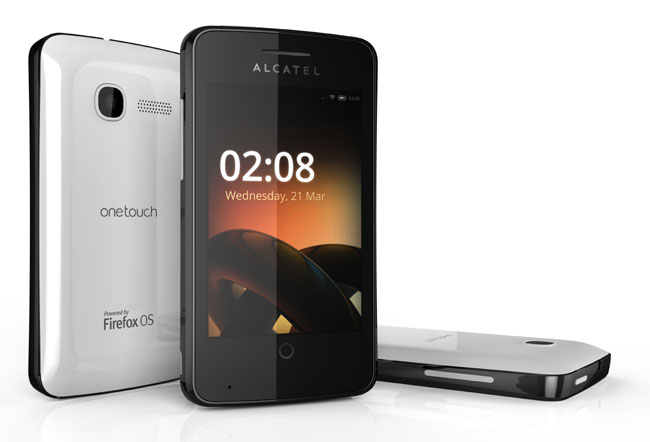Firefox Flame
by Alcatel One Touch
The Alcatel One Touch Fire is the first phone to run Firefox OS, new software that aims to light a fire under Android.
The 3.5-inch Fire is a dinky little number wrapped in a cheerful, brightly colored plastic casing. The rounded corners and vibrant look -- including signature Firefox orange -- give it a chunky, playful appearance.
It's basically the Alcatel T'Pop , a low-end feature phone, but the big difference is the software. Firefox OS is an open-source operating system created by Mozilla, the folks behind the Firefox Web browser. Apps are built using HTML5, which means that in theory they run on the Web and on your phone or tablet.
At the time of writing, Firefox OS is still some months away from release, but there are some decent apps available already. For example, popular game Cut the Rope and Nokia's Here maps app are available now.
And of course, Firefox is on every phone to browse the Web. You can connect to the Web and to other devices by the usual array of smartphone options: 3G, 802.11n Wi-Fi, Bluetooth, and GPS.
 The Firefox OS interface is very simple, and certainly easy to get to grips with. On the home screen there's a tray at the bottom containing useful shortcuts, including icons for your text messages, phone dialer, and Firefox browser. There's also a big thumbs-up icon that allows you to send feedback about the phone.
The Firefox OS interface is very simple, and certainly easy to get to grips with. On the home screen there's a tray at the bottom containing useful shortcuts, including icons for your text messages, phone dialer, and Firefox browser. There's also a big thumbs-up icon that allows you to send feedback about the phone.Swipe right and you see all your apps arranged in a grid, which will be familiar to anyone who's used Android. But unlike Android, on the model I tried there's no option to rearrange apps or move them to the home screen. Alcatel says this will be included at some stage.
To visit the Firefox OS app store, swipe to the left and you're greeted with a grid of icons representing the different categories of apps, such as camera apps or sport-related apps. It's a neat introduction to the app store, much cleaner and simpler than the barrage of featured apps on the front page of many other app stores.
Simplicity is the theme of Firefox OS. It's designed to be easy to use, even if it's your first smartphone. It's also designed to be simple for phone networks to customize the phone.
With its simple and easy software, the Alcatel Fire isn't aiming to compete with high-end smartphones. But there are still few rough edges, even if you're not expecting high-end performance. You don't have to look too closely at the icons to see jagged edges on the HVGA screen, for example. And the model I tried felt pretty slow, too, with a Firefox logo popping up as it took a moment to open even basic functions.
If it struggles with the basics, I'm dubious that the single-core 1GHz Qualcomm processor and its 256MB of RAM can do a decent job with games, Web browsing, and other activities that are now standard on smartphones. The Fire also has a 3.2-megapixel camera, but it wasn't ready for use on our test model.
The phone comes with a 2GB microSD card, or you can add a bigger card for up to 32GB of storage for your movies and music, apps, and snaps.
It's too early to tell if Firefox and the Fire's problems will be ironed out. Much depends on the phone networks and how they customize the phone -- and how they price it. I want to like Firefox OS, and if I'd never used a smartphone before I probably would. But with this first impression, Firefox OS simply doesn't offer enough to tempt me away from the wealth of cheap Android phones that are every bit as cute, match the Fire's specs, and are backed by an established, jam-packed app store.
The Fire will rise first in China, followed by Latin America and Europe. Alcatel expects it to catch flame in June, but exact release details, including price and release date, will depend on the carriers that decide to sell it -- or not. Alcatel is currently in talks with Deutcshe Telecom and Telefonica.
All information courtesy of CNET






